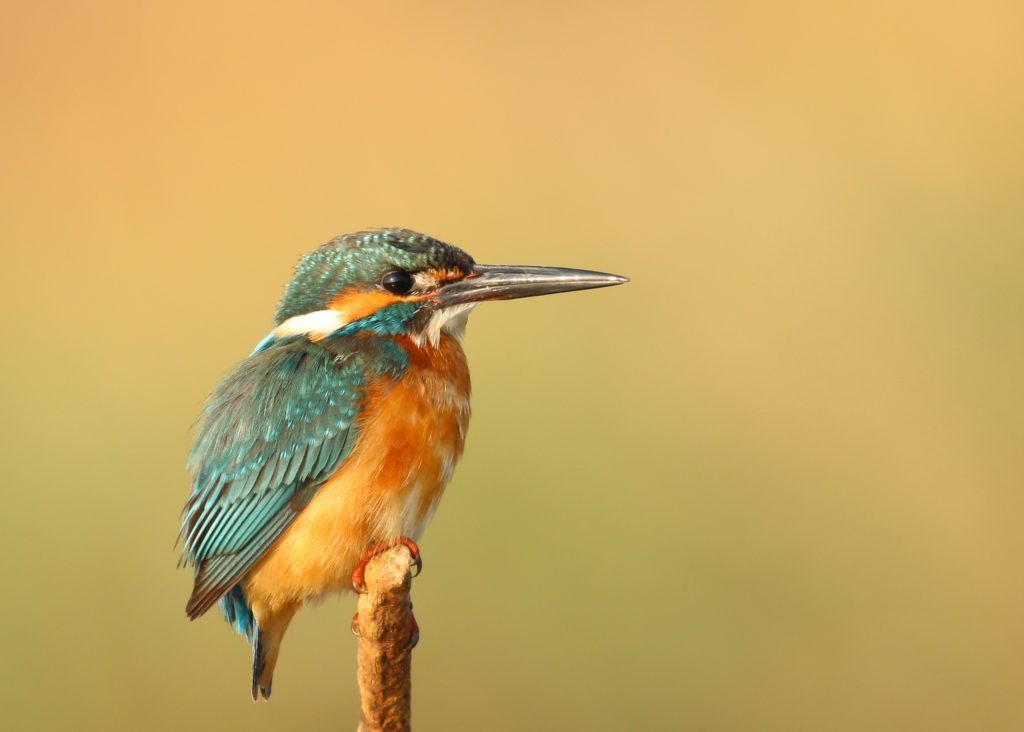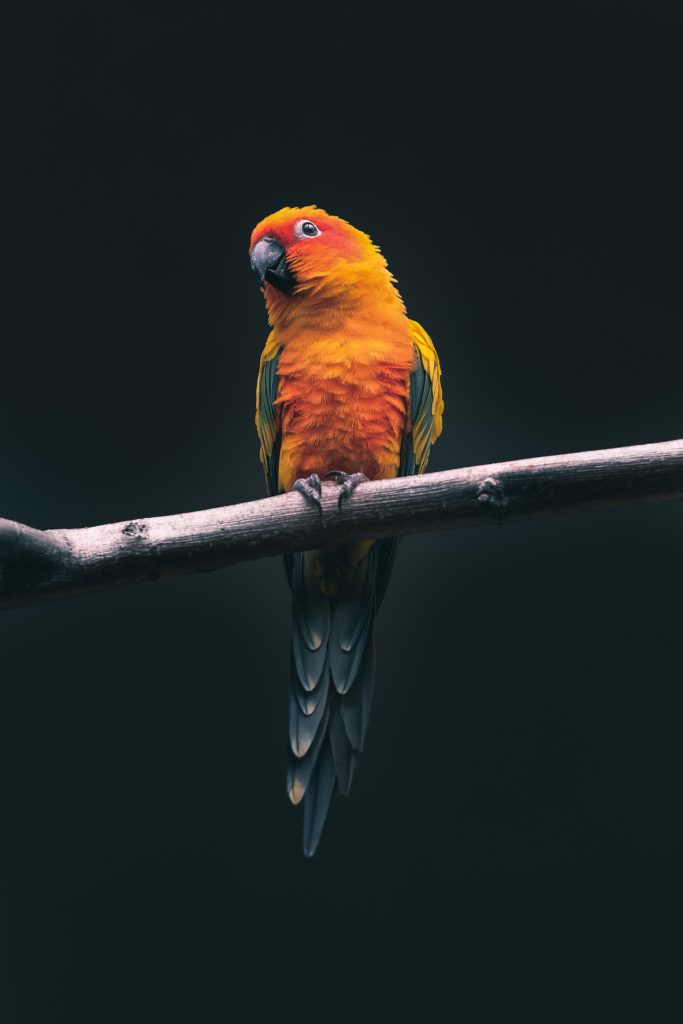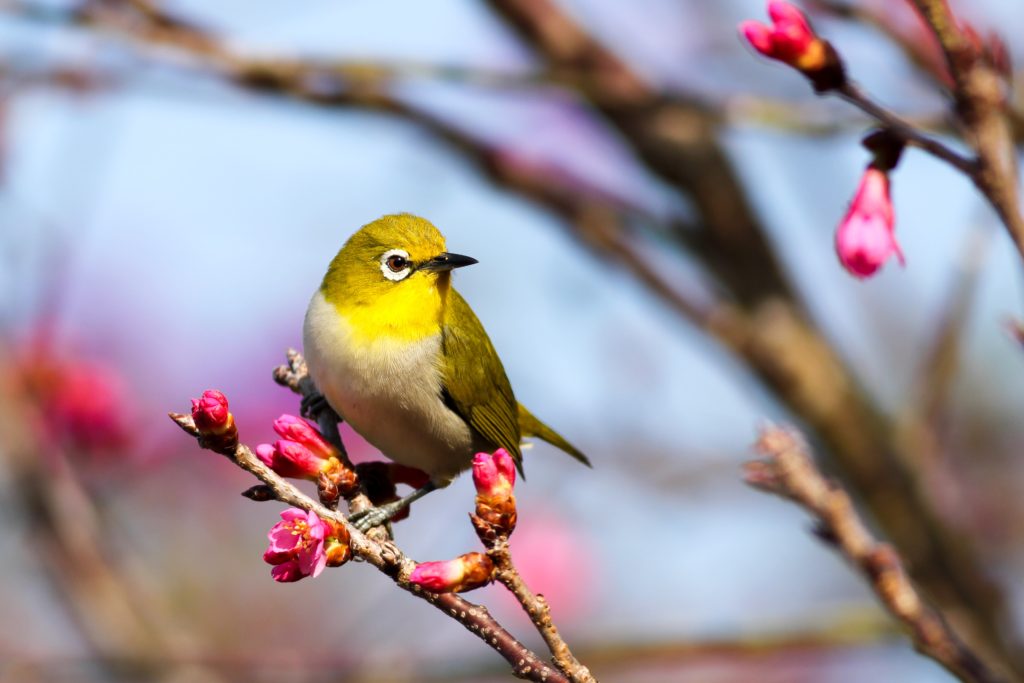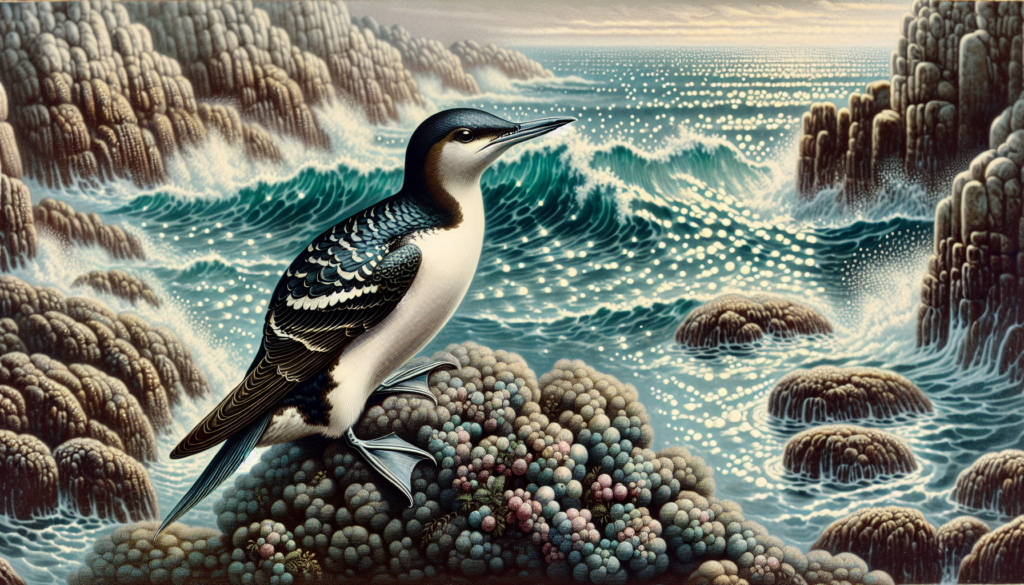Get ready to be amazed by the fascinating world of Scripps’s Murrelet! In this article, we will provide you with special insights that coastal birders will find invaluable. From the best bird feeders to the finest bird seed mixes, we have got you covered. Discover top brands such as Kaytee, Perky-Pet, Droll Yankees, and more, that specialize in providing quality products for bird enthusiasts. Whether you are an experienced birder or just starting out, these insights will enhance your birding experience and help you appreciate the marvels of the Scripps’s Murrelet and other coastal birds. So, get your binoculars ready and prepare to be dazzled by these incredible creatures of the coast!

Understanding Scripps’s Murrelet
Scripps’s Murrelet, also known as Xantus’s Murrelet, is a small sea bird that can be found along the coast of North America, specifically in the Pacific Ocean. These birds are known for their unique characteristics and behaviors, which make them a fascinating subject for birders and nature enthusiasts. In this article, we will explore the various aspects of Scripps’s Murrelet, including their characteristics, habitat, conservation status, and tips for observing and attracting them.
Characteristics of Scripps’s Murrelet
Scripps’s Murrelet is a relatively small bird, measuring around 8-10 inches in length and weighing between 6.5 to 8.5 ounces. They have a distinct appearance with their dark brown plumage on the upper body and white underparts. They also have a sharp, pointed bill that helps them catch and consume their prey.
One of the most remarkable features of Scripps’s Murrelet is their ability to dive deep underwater in search of food. They can dive up to 200 feet and stay underwater for several minutes. This adaptation allows them to feed on small fish, crustaceans, and other marine invertebrates.
Habitat and Distribution
Scripps’s Murrelet is primarily found along the coast of North America, from central California to Baja California in Mexico. They prefer rocky coastal areas and islands where they can nest and find ample food sources. These birds are known for their strong association with kelp forests and offshore rocks.
During the breeding season, Scripps’s Murrelet nests in rocky crevices, burrows, or even old tree holes, often located near the water. They lay a single egg and both parents take turns incubating it. After hatching, the chicks are cared for by their parents until they are ready to fledge.
Special Behaviors and Adaptations
Scripps’s Murrelets have several unique behaviors and adaptations that make them a delight to observe. As mentioned earlier, their ability to dive deep underwater is one of their most remarkable adaptations. They use their wings to propel themselves through the water, enabling them to navigate underwater with ease.
These birds are also known for their ability to fly long distances, often traveling hundreds of miles in search of food or suitable nesting sites. They have a streamlined shape and strong wings that allow them to fly swiftly and efficiently over the ocean.
Furthermore, Scripps’s Murrelets are social birds and often form small flocks outside of the breeding season. They communicate with each other using various vocal calls, which birders can learn to recognize in order to locate and identify them.
Spotting Scripps’s Murrelet
Observing Scripps’s Murrelet in their natural habitat can be a thrilling experience for birders. However, it requires careful planning and knowledge about their behavior and preferred locations. In this section, we will discuss the best time to observe these birds, the geographic locations where they can be found, and effective tactics for spotting them.
Best Time to Observe
The best time to observe Scripps’s Murrelet is during the breeding season, which typically occurs from late spring to early summer. During this time, they are more active and visible as they engage in courtship displays, nesting activities, and feeding their young.
It is important to note that Scripps’s Murrelets are primarily active during the early morning and late afternoon. These are the times when they are actively foraging for food and engaging in other behaviors. Therefore, birders should plan their outings accordingly to increase their chances of spotting these birds.
Geographic Locations for Viewing
Scripps’s Murrelets are primarily found along the coast of North America, from central California to Baja California in Mexico. Some of the popular locations for viewing these birds include the Channel Islands National Park in California, where they nest in the rocky cliffs and islands.
Other locations include Point Loma in San Diego, California and the Coronado Islands in Mexico. These areas provide excellent opportunities to observe Scripps’s Murrelets in their natural habitat.
Spotting Tactics for Birders
Spotting Scripps’s Murrelet can be challenging due to their small size and preference for rocky coastal areas. However, there are several tactics that birders can employ to increase their chances of spotting these birds.
One effective tactic is to use binoculars or a spotting scope, as these birds may be located far away from the shore or nesting sites. By bringing optics with you, you can get a closer view of the birds without disturbing them.
Another tactic is to scan the water and rocky areas for any movement or signs of bird activity. Scripps’s Murrelets often dive into the water to catch their prey, so keep an eye out for any splashes or ripples. Additionally, listening for their distinctive calls can also help in locating them.
Finally, it is essential to be patient and observant. These birds can be elusive and may blend in with their surroundings, so it may take some time before you spot them. Take your time, scan the area thoroughly, and enjoy the process of searching for these fascinating seabirds.

Conservation Status of Scripps’s Murrelet
Understanding the conservation status of Scripps’s Murrelet is crucial for any birder or nature enthusiast. These birds face various threats that impact their population and overall survival. In this section, we will discuss the current conservation status of Scripps’s Murrelet, the threats they face, and the efforts being made to protect and conserve them.
Current Conservation Status
Scripps’s Murrelet is listed as a species of concern by the U.S. Fish and Wildlife Service. They are considered vulnerable due to habitat loss, disturbance, and pollution. The population of these birds has been declining, primarily due to nesting habitat destruction and disturbance from human activities.
Threats to the Species
One of the significant threats to Scripps’s Murrelets is habitat loss and degradation. Coastal development, pollution, and oil spills have a severe impact on their nesting sites and food sources. Destruction of kelp forests and disturbance during the breeding season also contribute to the decline of these birds.
Another threat to Scripps’s Murrelets is accidental bycatch in fishing nets. These birds can become entangled in fishing gear, leading to injuries and mortality. Overfishing and unsustainable fishing practices further exacerbate this threat.
Conservation Efforts
Numerous conservation organizations and agencies are working to protect and conserve Scripps’s Murrelets and their habitats. Conservation efforts include habitat restoration, establishing protected areas, and implementing regulations to reduce disturbance and bycatch.
Additionally, public awareness and education play a crucial role in the conservation of these birds. By educating the public about the importance of protecting Scripps’s Murrelets and their habitats, more people can become engaged and actively contribute to their conservation efforts.
By supporting the work of these conservation organizations and participating in citizen science initiatives, individuals can make a positive impact on the conservation of Scripps’s Murrelet.
Birding Gear For Scripps’s Murrelet Viewing
Essential Gear for Birders
For birders who want to observe Scripps’s Murrelet, having the right equipment is essential. Here are some essential gear items every birder should consider having:
-
Binoculars: A good pair of binoculars is essential for getting a closer look at these small seabirds. Look for binoculars with high magnification and excellent optical quality.
-
Spotting Scope: A spotting scope with a tripod can provide even more magnification and detail, particularly for viewing Scripps’s Murrelets in distant locations.
-
Field Guide: A reliable field guide specifically tailored to the birds of North America will help you identify Scripps’s Murrelet and other species you may encounter while birding.
-
Camera: If you want to capture photographs of Scripps’s Murrelet and other bird species, consider investing in a good quality camera with a telephoto lens or a compact digital camera with a decent zoom.
Recommended Brands and Products
When it comes to birding gear, there are several reputable brands and products that birders can consider. Some of the well-known brands for birding gear include:
- Kaytee: Specializes in bird seeds, feeders, and accessories.
- Perky-Pet: Known for a wide range of bird feeders.
- Droll Yankees: Offers high-quality bird feeders, especially for songbirds.
- Wagner’s: A leading brand for various bird seed mixes.
- Brome Bird Care: Renowned for squirrel-proof bird feeders.
- Wild Delight: Offers premium bird food products.
- Stokes Select: Provides bird feeders, birdhouses, and bird seed.
These brands offer a variety of birding gear, from binoculars and spotting scopes to bird feeders and seed mixes. It is important to do your research and choose the gear that best suits your specific needs and budget.
Tips for Using Birding Gear Effectively
Having the right gear is one thing, but using it effectively is another. Here are some useful tips for using birding gear effectively when observing Scripps’s Murrelets:
-
Practice with your binoculars or spotting scope before heading out into the field. Familiarize yourself with the focusing mechanisms and adjust the settings to suit your viewing preferences.
-
When using binoculars, keep your eyes relaxed and avoid squinting. This will help you maintain a clear and steady view of the birds.
-
For photography, experiment with different camera settings to capture the best shots. Use a fast shutter speed to freeze the birds’ movements and a small aperture for greater depth of field.
-
When using a spotting scope, use a tripod to stabilize the scope and reduce any shaking or movem\d during viewing. This will allow for more detailed observations and better image quality.
Remember, practice makes perfect. The more you use your gear and experiment with different settings, the more comfortable and proficient you will become at observing Scripps’s Murrelets and other bird species.

Feeders and Seeds for Attracting Scripps’s Murrelet
Specific Feeder types
Attracting Scripps’s Murrelets to feeders can be challenging due to their preference for marine food sources. However, there are certain feeder types that can attract other bird species, creating an environment that may indirectly benefit Scripps’s Murrelets. Here are some feeder types to consider:
-
Platform feeders: These feeders provide a flat surface for scattering a mixture of seeds, grains, and suet. They attract a variety of bird species, including finches and sparrows, that may attract Scripps’s Murrelets as they forage in nearby areas.
-
Suets feeders: Offering suet, which is a high-calorie mixture of fat, can attract insect-eating birds such as woodpeckers and nuthatches, which in turn may attract other bird species to the area.
-
Hummingbird feeders: While Scripps’s Murrelets are not known for their interest in feeders, having a hummingbird feeder can attract these small, colorful birds. The presence of hummingbirds can create a favorable environment for other bird species, including Scripps’s Murrelets.
Recommended Seed Brands and Types
When it comes to selecting seeds for your feeders, it is important to choose high-quality brands that offer a variety of nutritious seeds. Here are some recommended seed brands and types:
- Wagner’s: Known for their wild bird seed mixes that contain a variety of seeds and grains.
- Pennington: Offers a range of wild bird seed products that provide essential nutrients for the birds.
- Lyric: Known for their premium wild bird food products that are carefully selected to attract a wide range of bird species.
- Morning Song: Offers a variety of bird food and attractants that can be tailored to the specific needs of different bird species.
It is important to read the labels and choose seed mixes that are appropriate for the bird species you are trying to attract. Experimenting with different seed blends can help you find the ones that are most appealing to the birds in your area.
Placement and Care for Feeders
When placing feeders to attract Scripps’s Murrelets indirectly, it is important to consider their natural habitat and food sources. Here are some guidelines for feeder placement and care:
-
Position feeders near shrubs or trees to provide cover and protection for the feeding birds.
-
Keep feeders clean and regularly refill them to ensure a consistent food source for the birds.
-
Avoid placing feeders in areas where they may attract unwanted predators or become a nuisance to the surrounding environment.
-
Place feeders at different heights to accommodate different bird species and their feeding preferences.
By providing a reliable food source and proper feeder placement, you can create an environment that may indirectly benefit Scripps’s Murrelets and contribute to their overall well-being.
Understanding and Attracting Scripps’s Murrelet with Bird Calls
Recognizing Scripps’s Murrelet Calls
Recognizing the calls of Scripps’s Murrelets can be a valuable skill for birders who want to locate and identify these birds. While they may not be known for their distinct calls, Scripps’s Murrelets communicate using soft, low-pitched whistles and purrs.
Their calls are often heard during the breeding season and can be described as melodic and rhythmic. By familiarizing yourself with the common calls of Scripps’s Murrelets, you can increase your chances of spotting them in the field.
Using Recordings to Attract the Birds
Playing recordings of Scripps’s Murrelet calls can be an effective strategy for attracting these birds, particularly during the breeding season. However, it is important to use this tactic responsibly and ethically. Excessive use of recordings or playing them in the wrong habitat can cause undue stress and disturbance to the birds.
When using recordings, make sure to play them at a moderate volume and limit the duration to avoid excessive impact on the birds’ natural behaviors. It is also crucial to follow any local guidelines or regulations regarding the use of audio recordings for bird attraction.
Legal and Ethical Considerations
When using bird calls to attract Scripps’s Murrelets or any other bird species, it is essential to prioritize their well-being and adhere to legal and ethical guidelines. Here are some considerations to keep in mind:
-
Check local regulations: Before using bird calls, familiarize yourself with any regulations or restrictions regarding the use of audio playback for bird attraction. Some areas may have specific rules in place to protect the birds and their habitats.
-
Use calls responsibly: Only use bird calls sparingly and in appropriate habitats. Overuse or playing calls in the wrong areas can disrupt the natural behaviors of the birds and may cause unnecessary stress.
-
Respect natural behaviors: While attracting birds with calls can be exciting, it is crucial to remember that the primary goal is to observe and appreciate the birds in their natural habitat. Avoid any actions that may disturb their nesting, feeding, or social behaviors.
By understanding and following these legal and ethical considerations, you can enjoy the benefits of attracting Scripps’s Murrelets with bird calls while ensuring the well-being of the birds and their habitats.

Insights on Scripps’s Murrelet Nesting and Breeding Habits
Typical Nesting Locations
Scripps’s Murrelets have specific nesting preferences and can be found in a variety of nesting locations. They typically nest in rocky crevices, burrows, or even old tree holes, often located near the water. These birds have a strong association with coastal areas and offshore islands, where they can find suitable nesting sites.
The Channel Islands National Park in California is one of the notable nesting locations for Scripps’s Murrelets. The rocky cliffs and islands provide ideal nesting habitat, offering protection and easy access to their marine food sources.
Breeding Season and Behavior
Scripps’s Murrelets have a specific breeding season which typically occurs from late spring to early summer. During this time, they engage in courtship displays and mating rituals to establish pair bonds.
After mating, the female selects a suitable nesting site, often a rocky crevice or burrow, to lay a single egg. Both parents take turns incubating the egg, sharing the responsibility of keeping it warm and protected. This shared incubation behavior is rare among seabirds and contributes to creating a strong bond between the parents.
Once the egg hatches, the parents continue to care for the chick, providing food and protection until it is ready to fledge. The chicks are precocial, meaning they are relatively mature and capable of independent movement shortly after hatching.
Observing Nesting Without Disturbing
Observing Scripps’s Murrelet nesting activities can be a rewarding experience, but it is crucial to do so without disturbing the birds or their nesting sites. Here are some tips for observing nesting behavior without causing harm:
-
Keep a safe distance: Use binoculars or a spotting scope to observe the birds from a safe distance. Avoid getting too close to the nesting sites, as this can cause stress and disturbance to the birds.
-
Be mindful of your behavior: Stay quiet and avoid sudden movements when near nesting areas. Sudden noises or disturbances can startle the birds and disrupt their natural behaviors.
-
Follow designated trails and viewing areas: Stick to established paths and viewing areas to minimize your impact on the surrounding vegetation and wildlife. Avoid trampling on sensitive habitats or nesting sites.
By practicing responsible birdwatching and maintaining a respectful distance, you can observe Scripps’s Murrelets engaging in their nesting behaviors while ensuring their well-being and preserving the integrity of their nesting sites.
Photographing Scripps’s Murrelet
Tips and Techniques for Bird Photography
Photographing Scripps’s Murrelets can be a wonderful way to capture their beauty and unique behaviors. Here are some tips and techniques for capturing stunning photographs of these birds:
-
Use a telephoto lens: Scripps’s Murrelets are known for their small size and ability to swim and fly quickly. To capture close-up shots, use a telephoto lens with a focal length of at least 300mm. This will allow you to get detailed images without getting too close to the birds.
-
Pay attention to lighting: Lighting plays a crucial role in bird photography. Aim to shoot during the golden hours around sunrise and sunset, when the light is softer and more flattering. This will enhance the colors and details of the birds’ plumage.
-
Capture unique behaviors: Try to capture Scripps’s Murrelets engaging in their special behaviors, such as diving underwater or interacting with their young. Patience and observation are key to anticipating these moments and capturing them in your photographs.
-
Experiment with compositions: Don’t be afraid to experiment with different compositions and angles. Capture the birds in their natural surroundings, whether it’s perched on a rock or flying over the water. This will add depth and context to your images.
Specific Considerations for Scripps’s Murrelet
When photographing Scripps’s Murrelets, there are some specific considerations to keep in mind to ensure the well-being of the birds and their habitats:
-
Observe from a safe distance: Maintain a respectful distance from the birds and their nesting areas. Avoid getting too close, as this can cause stress and disturbance to the birds.
-
Minimize your presence: Be mindful of your impact on the birds’ behaviors and the surrounding environment. Minimize your presence and avoid any actions that may disrupt their natural activities.
-
Avoid excessive use of flash: The use of flash can startle and disturb the birds, especially during sensitive moments such as nesting or feeding. Avoid using flash unless absolutely necessary or in controlled settings.
Remember, while capturing stunning photographs is exciting, the well-being and conservation of Scripps’s Murrelets should always come first. By practicing ethical and responsible photography, you can document these beautiful birds while contributing to their protection and conservation.
The Role of Scripps’s Murrelet in its Ecosystem
Food Chain Position
Scripps’s Murrelets play a crucial role in the marine ecosystem as part of the food chain. As piscivorous birds, they primarily feed on small fish and other marine invertebrates, serving as predators and controlling the population of their prey.
By preying on smaller fish species, Scripps’s Murrelets help to maintain the balance within the marine ecosystem. They also serve as a food source for larger predators, such as seabirds, marine mammals, and even sharks.
Influence on Habitat
The presence of Scripps’s Murrelets and their nesting activities can have a positive influence on their habitat. By nesting in rocky crevices and burrows, they provide important ecological services to other species as well.
Their nesting activities can help improve soil quality and plant growth through the accumulation of guano. This nutrient-rich waste material can act as a natural fertilizer, supporting the growth of vegetation in the surrounding areas.
Therefore, Scripps’s Murrelets contribute to the overall health and stability of their coastal habitats, playing a vital role in maintaining the delicate balance of these ecosystems.
Importance in Birdwatching Community
Scripps’s Murrelets are highly valued by the birdwatching community due to their unique characteristics and behaviors. Their elusive nature and preference for coastal environments make them a sought-after species for birders and nature enthusiasts.
By attracting birdwatchers to specific locations, Scripps’s Murrelets also contribute to local economies through ecotourism. Their presence can stimulate interest in birding activities, leading to increased awareness and conservation efforts.
Additionally, the study and observation of Scripps’s Murrelets provide valuable insights into their ecology and behavior, contributing to scientific research and conservation initiatives.
Participating in Scripps’s Murrelet Conservation
Contributing to Conservation Efforts
As nature enthusiasts, there are several ways you can actively contribute to the conservation of Scripps’s Murrelets and their habitats:
-
Support conservation organizations and initiatives: Consider donating to or volunteering with organizations that work to protect and conserve seabird populations, such as the Audubon Society or local conservation groups.
-
Practice responsible birdwatching: Follow ethical guidelines when observing Scripps’s Murrelets and other bird species. Minimize disturbance, stay on designated trails, and refrain from removing or disturbing natural materials.
-
Promote awareness and education: Spread the word about the importance of conserving Scripps’s Murrelets and their habitats. Share your knowledge and experiences with others to inspire conservation-minded actions.
-
Engage in citizen science programs: Participate in citizen science initiatives that focus on monitoring and collecting data on bird populations. Your observations and records can contribute to scientific research and conservation planning.
Citizen Science Opportunities
Citizen science programs provide valuable opportunities for individuals to actively participate in scientific research and conservation efforts. There are several initiatives that focus on monitoring Scripps’s Murrelet populations and studying their behaviors. By joining these programs, you can contribute to the conservation of these birds while furthering your own knowledge and understanding.
Educational Resources for Further Learning
To expand your knowledge and deepen your understanding of Scripps’s Murrelets, there are numerous educational resources available:
-
Books and Field Guides: Explore books and field guides specifically dedicated to seabirds and coastal bird species. These resources provide in-depth information on Scripps’s Murrelets and their unique characteristics.
-
Online Articles and Websites: Visit reputable online platforms such as the Audubon Society, National Geographic, or Cornell Lab of Ornithology for articles, studies, and resources related to Scripps’s Murrelets and bird conservation.
-
Local Workshops and Events: Check with local nature centers, birding clubs, and conservation organizations for workshops, presentations, and events focused on coastal bird species. These opportunities often provide valuable insights and hands-on learning experiences.
By taking advantage of these educational resources, you can continue to expand your knowledge about Scripps’s Murrelets and actively contribute to their conservation efforts.
In conclusion, Scripps’s Murrelets are fascinating seabirds that captivate the attention of birders and nature enthusiasts. Their unique characteristics, behaviors, and conservation status make them a subject of great interest. By understanding their habitat, employing effective birding techniques, supporting conservation efforts, and promoting ethical practices, we can ensure the long-term survival and protection of Scripps’s Murrelets for generations to come.
